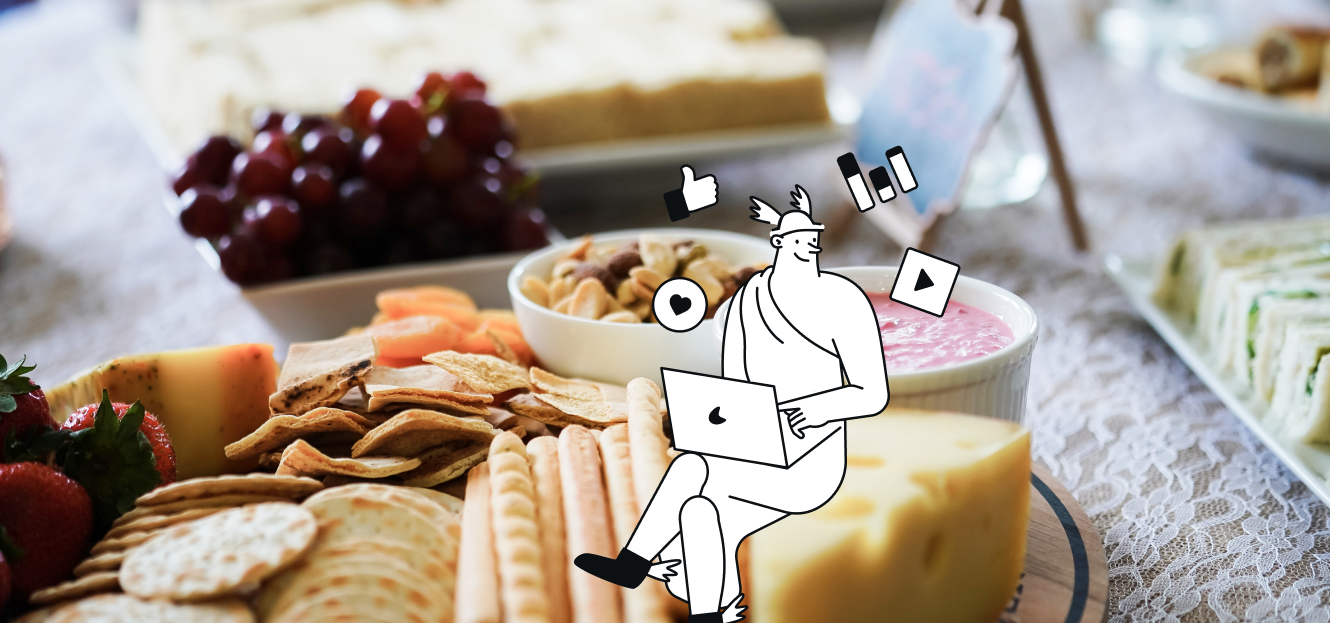Company
Email Academy: Taking your email strategy beyond the basics
In this fourth episode of our Email Academy series, Sinch Mailjet’s Sr. Product Manager Natalie Lynch and Sr. Email Marketing Manager Julia Ritter go through some more advanced email strategies you can apply to your email campaigns.

PUBLISHED ON
If you joined us for our first episode of Email Academy – “Mastering the basics of email marketing” – you ‘ll remember we discusses some more introductory topics, such as defining goals, building a subscriber list, and some of the basic email types for you to get started with.
Now we dive deeper into some more advanced strategies, tools, and techniques to show you how to optimize your email campaigns using data and take your email program to the next level.
We’ll walk you through how to use campaign analytics to optimize your strategy, apply segmentation and A/B testing to your email blasts, and leverage the power of AI in your email marketing.
Think you’re ready to step up your email game? Let’s find out!
Key strategies to take your email program beyond the basics
Did you know most email recipients get over 20 emails per day? With so much competition in the inbox, just sending messages doesn’t cut it anymore.
Making the most of your email program and ensuring your campaigns are an effective way to build meaningful relationships with customers requires constant optimization work to make your messages more relevant and engaging.
So, how can you go from just sending to really delivering emails your recipients are really looking forward to? We dived into that in our fourth webinar in our Email Academy series.
Let’s look into each of these strategies in detail.
Campaign analytics tracking
“What is not defined cannot be measured. What is not measured, cannot be improved. What is not improved will eventually degrade.” Those are the words of British mathematician Thomas Kelvin, and hold as true for 19th-century algebra as they do for modern day email marketing.
Why? Because without setting clear goals and monitoring the relevant key performance indicators (KPIs) to determine progress, it’s impossible to ascertain whether your campaign was a success or not.
So, what are some of the key email marketing metrics you should be tracking to make more informed decisions? Below we’ll quickly go through five of the most common ones:
Delivery rate: It represents the percentage of sent emails that successfully reach the recipients' inboxes without bouncing or being marked as spam. It’s arguably one of the most important metrics to monitor, as low delivery rates could indicate problems with email deliverability and become an expensive problem down the line.
Open rate: Measures the percentage of recipients who opened an email from a specific campaign. Open rates provide insights into the effectiveness of an email campaign's subject line, content, and overall appeal, helping marketers assess how well their messages resonate with their audience.
Click-through rate (CTR): Measures the percentage of subscribers who clicked on one or more links within your content. It’s a good metric to use when measuring the effectives of call to action (CTA) buttons, content quality, and relevance.
Click to open rate (CTOR): Unlike the click-through rate, the CTOR provides more focused data by only counting subscribers who opened the email. It’s another great yardstick for determining how engaging and relevant the content is to readers.
Unsubscribe rate: This metric measures the percentage of email recipients who choose to opt out or unsubscribe from your list after receiving an email. Clearly, the higher the number of unsubscribes you receive, the less relevant your content is for readers.
So, now that you have the metrics, how do you go about calculating them? We’ve put together a small formula table to help you below:
Metric | Formula |
|---|---|
Metric | |
Delivery rate | Delivered count/Sent count |
Formula | |
Open rate | Open count/Delivered count |
Click rate | Click count/Delivered count |
Click to open rate | Click count/Open count |
Unsubscribe rate | Unsubscribe count/Delivered count |
During the webinar, Julia also emphasized the importance of using unique values when analyzing your data.
A unique value is a metric that indicates the number of subscribers that engaged with your content (open, click, unsubscribe, etc.). It does not include multiple actions from the same subscriber.
This is important to note, as unique clicks paint a more accurate picture of your campaign’s success. For example, a single subscriber may open, close, and reopen the same email several times. This would artificially inflate your figures and potentially cause you to draw inaccurate conclusions from the data, so something for you to keep in mind.
Segmentation
How do you feel when you receive an impersonal, slightly irrelevant email from a brand? Annoyed? Disappointed? As an email sender you might even feel a little empathy for your peer. Whatever your reaction, it probably won’t end with you engaging with their content.
One effective strategy to avoid this is subscriber list segmentation. As the name suggests, segmentation is the practice of dividing an email list into smaller, more targeted groups based on specific criteria (age, interests, demographic, etc.)
Instead of sending a generic message to the entire email list, segmentation allows marketers to tailor their communication to different subsets of subscribers who share common characteristics or behaviors. This approach enhances the relevance of email campaigns and improves overall engagement.
"I love segmentation. I do it as often as I can, and get as granular as I can, and have seen some huge increases in engagement as a result."
Julia Ritter, Sr. Email Marketing Manager at Sinch Mailjet
Here are some suggested segmentation options for you to consider:
Demographics: Based on characteristics such as age, gender, location, job title, or industry.
Behavioral segmentation: Segment subscribers according to their interactions with previous emails, website visits, or purchase history.
Preferences: Consider segmenting based on subscriber preferences such as content type, frequency of emails, or preferred communication channels.
Funnel position: Divide subscribers based on where they are in the funnel, such as new subscribers, long-time customers, or those who have recently made a purchase.
Purchase behavior: You can try offering products that are similar to those they’ve previously purchased. Or, if a customer bought something that requires replacement, refilling, or renewal, you can send out targeted emails based on their needs.
Segment sizes can be as large or as small as you like. However, the more granular you can get, the more likely it is that your content will resonate with your audience. Without email segmentation, it’s difficult to engage your subscribers and improve your conversion rate.
A/B testing
A/B testing, commonly referred to as split testing, is an email marketing tactic where two or more versions of an email campaign are sent to subscribers with the goal of determining which version performs better. Success is measured by identifying the key metrics you’re testing against (open rates, click-through rates, etc.).
Now, A/B testing can vary from simple to complex testing:
Simple A/B testing includes changing one or two elements within a campaign that are quick and easy to customize, such as subject lines, CTA button color and size.
Advanced A/B testing goes into further depth with the customization of multiple elements in your campaign such as picture placements, overall messaging, personalization, or comparing different email templates against each other.
Why should you be split testing as an email marketer? Instead of relying on assumptions or guesswork, A/B testing provides concrete data on what kind of content your audience prefers. This helps you make strategic long-term decisions based on evidence, rather than intuition, when it comes to improving your email campaign performance.
Here are five important email marketing elements to consider testing for your upcoming campaigns:
Subject lines: This is the first thing subscribers will read when your email lands in their inbox, so it’s vital to experiment with variations in length, style, tone, or even the use of emojis to capture their attention.
Email copy and content: Play around with variations in the main body of your email, including headlines, copy, and overall content to identify what resonates best with your audience.
Call to action (CTA): Test different versions of your call to action elements, such as button text, color, size, and placement. Determine which combinations lead to higher click-through rates and better conversion outcomes.

Images and multimedia: There’s definitely a time and a place for plain text email. However, why not try adding different images, graphics, or multimedia elements to your emails to test the impact they might have on your audience?
Timing and send frequency: Test the timing of your email sends to find the optimal days and times for reaching your audience. Additionally, experiment with the frequency of your email campaigns to strike the right balance between maintaining engagement and avoiding subscriber fatigue.
You could do all this manually by recording changes in an Excel or Google Doc and then monitoring performance. Or, you could save yourself a ton of time and automate the entire process by utilizing A/B testing tools like Mailjet’s.
These tools allow you to send different variants of your campaign to a small sample audience before sending the best performing version to the remaining 80% of your list.
Pro tip: Only test one element at a time. This will help you better establish cause and effect and more accurately attribute changes in engagement to the elements you’ve A/B tested.
AI email marketing
Artificial Intelligence (AI) email marketing is refashioning the way email marketers engage with their audiences, leveraging advanced algorithms and machine learning capabilities to optimize and personalize campaigns.
But not everyone is quite onboard, and we get it. There’s an underlying fear that AI will eventually somehow replace email marketers and leave us without a job – though we’re not convinced that will be the case.
AI is transforming various aspects of email marketing and enhancing efficiency, but let’s be honest – it’s unlikely to replace email marketers entirely. Instead, AI serves as a valuable tool to augment the capabilities of marketers, allowing us to work more strategically and effectively.
Strategically used, artificial intelligence gives us a chance to offload the mundane, repetitive aspects of our work so we can focus on humanizing the email marketing experience. While AI can do the boring work, we can concentrate on developing stronger relationships with our customers, strategizing growth, and truly adding value to our audience.
With that said, let’s go through some of the areas of email marketing that AI could potentially help you with:
Predictive analytics: AI algorithms can analyze historical data and user behavior and engagement patterns to try and predict the type of content subscribers want to receive from brands.
Segmentation: They can also be used to identify product preferences, customer location, and individual demographics to organize prospects and customers into multiple email lists with targeted campaigns for each stage of the customer journey.
Automation: AI helps in creating and managing complex automated email campaigns and workflows. This includes setting up trigger-based emails, drip campaigns, and customer journeys based on specific interactions or behaviors.
Copy generation: Copywriting is a key responsibility for email marketers, but it can also be one of the most time intensive. With the right prompts, AI can create dynamic, personalized content and email copy that resonates with individual recipients by addressing their unique preferences and interests in the message, so all the email marketer has to do is edit and polish the output.
At Mailjet, we strongly believe that AI email marketing is here to stay and we’re committed to developing features that empower senders to send smarter and faster email.
Mailjet’s AI Copy Generator is a tool built right into Mailjet’s Email Editor for easy use. It can help you create compelling content that resonates with your audience and, since it is pre-built into an email platform, there’s no need to toggle between different browser windows to create exceptional email newsletter content.
Sign up to Sinch Mailjet’s Email Academy
If you found this article helpful, you’ll be happy to hear we’re running an entire webinar series to help you develop and launch a successful email marketing strategy.
Throughout our Email Academy series, we’ll teach you how to build high quality email lists, craft amazing campaigns, and optimize your strategy. Plus, we’ll show you how to do all of this on Mailjet.
Check out past webinars in our YouTube channel and sign up to our Email Academy email list to stay in the loop regarding new episode releases.
Related readings
Popular posts

Top email marketing trends for 2022
To the outsiders, it can sometimes feel like email hasn't changed that much since it was created. Maybe this is why some are so persistent in...
Read more

Reducing email’s carbon footprint
When it comes to protecting our planet, every step toward cleaner practices – small and big – counts. So, what if we told you that emailing, as clean and green as it seems...
Read more

Marketing calendar 2024: Dates you shouldn’t miss this year
We finally got through 2023 (phew!) and Q1 is just around the corner. It’s time for you to start scribbling down your New Year’s Resolutions to make sure we start the year with a bang. If you’ve found your way here, we’re guessing that’s because creating a winning...
Read more



